More than half a million 9-1-1 calls each year get routed to ambulances, which are answered by emergency medical call takers (EMCTs) and dispatchers at BC Emergency Health Services. EMCTs answer inbound 9-1-1 calls, gather critical information from the caller and use approved protocols and systems to assess the patients.
Emergency medical dispatchers then use this information to determine the appropriate emergency response team/ambulance to send to the scene. While paramedic crews are en route, dispatchers pass along essential information that will help them care for the patient when they arrive. These members answer the most difficult 9-1-1 calls with calm and reassurance, ensuring callers get the help they need when they need it.
Emergency medical call takers (EMCTs) and dispatchers work at operation centres in Vancouver, Kamloops and Victoria and are supported by a clinical team that includes paramedic specialists, secondary triage staff, clinical specialists and emergency transport physicians. Together, this clinical team provides invaluable expertise and oversight that BCEHS teams rely on.
Patient Transfer Services is also based in Vancouver, where teams from the Patient Transfer Network (PTN) and the Patient Transport Coordination Centre (PTCC) help transfer patients to and from medical facilities. Patient Transfer Coordinators in PTN triage all inter-facility transfers and consult with both the sending and receiving facility in each case. This medical teleconference process is crucial to getting critically ill or injured patients to the right location as quickly as possible.
Once a patient transfer has been confirmed, it is passed to the PTCC staff, who manage logistics, dispatch ambulance resources, and coordinate transports for critical care – by air and ground. While most of these transfers happen within B.C., some require inter-provincial or even international travel.
Meanwhile, a mighty team of community paramedic coordinators organize the important patient visits
community paramedics do in local communities.
We caught up with members from our dispatch centres to share their thoughts for
Emergency Service Dispatchers’ and 9-1-1 Awareness Week and
National Public Safety Telecommunicators Week.
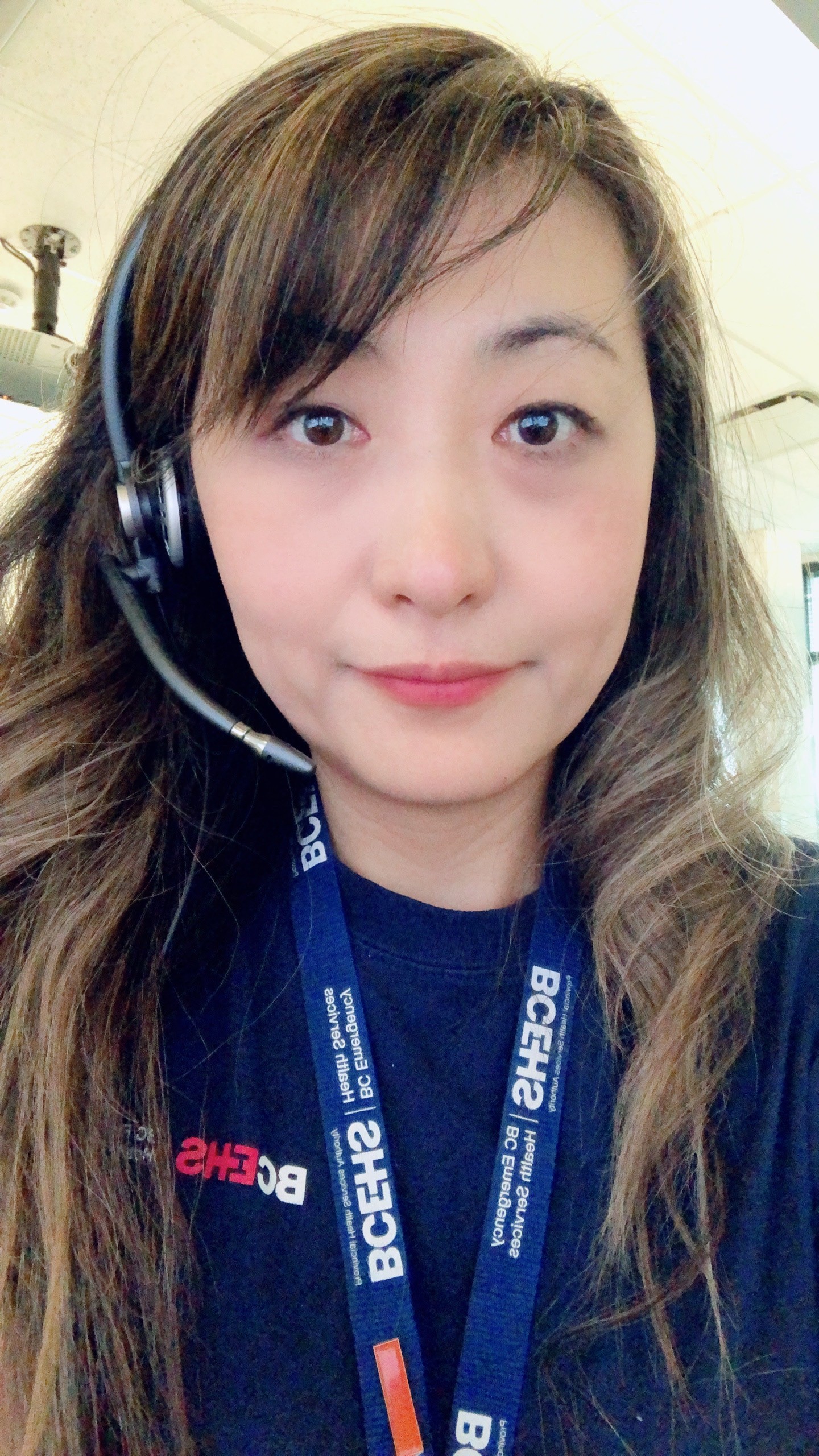 What does your work involve?
What does your work involve?
My work as a Patient Transfer Coordinator (PTC) at the Patient Transfer Network (PTN) involves interfacility transfers between hospitals. We help physicians with patient care with every call that comes through PTN. It can be as simple as coordinating the transfer of patients from a rural area to another facility for a CT scan or patients who need life-saving intervention. Physicians in the hospital start by dialing PTN because we are the voices on the other side assisting them with resources.
What is something about your job that people in the general public might find surprising?
A fact that I didn't learn until I started working at PTN is that when people travel out-of-province or country and sustain injuries requiring hospital transfer back to B.C., PTN is the one to help you get home safely. PTCs facilitate calls between out-of-country physicians with your community hospital physicians and make these transfers possible by working with your insurance company.
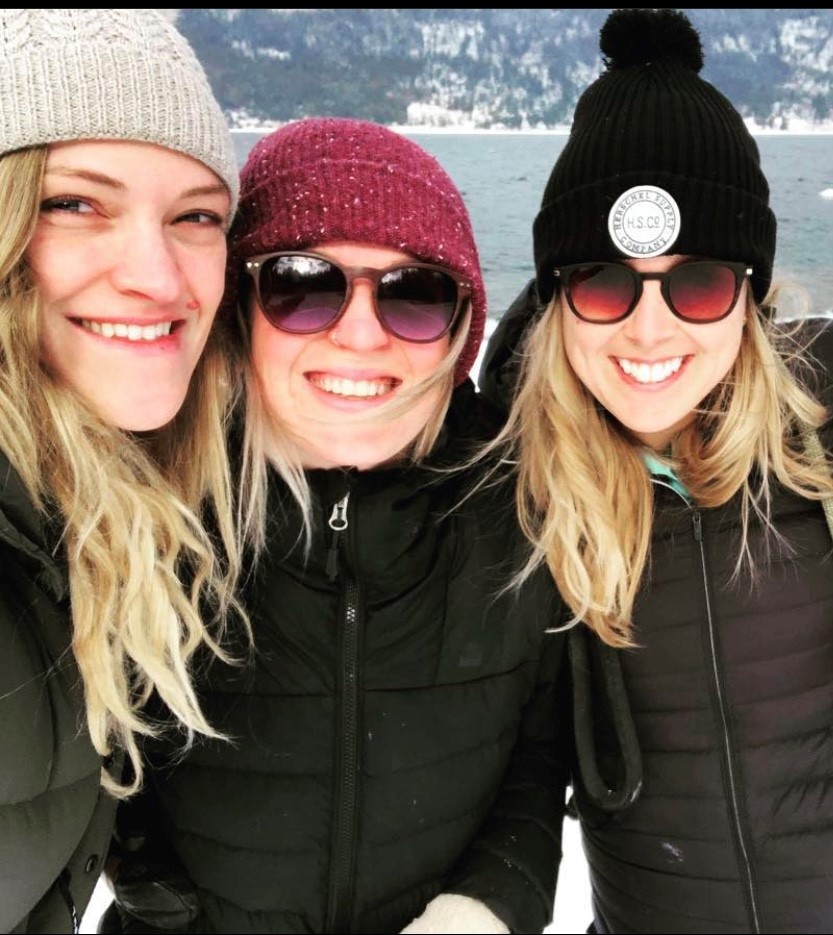 What do you enjoy most about your work?
What do you enjoy most about your work?
The best part of working in dispatch is my co-workers. It takes a special type to work as a dispatcher and call taker and these people are the best I've ever had the honour of working with.
We aren't just co-workers, we aren't just friends, we are family – brothers and sisters. The province of British Columbia is very lucky to have such dedicated and compassionate individuals keeping everyone safe.
(Left to right: Camilla Rylarsdaam - Victoria Dispatch, Hailee Pauwels - Victoria Dispatch & Brenda Schermerhorn - Kamloops Dispatch)
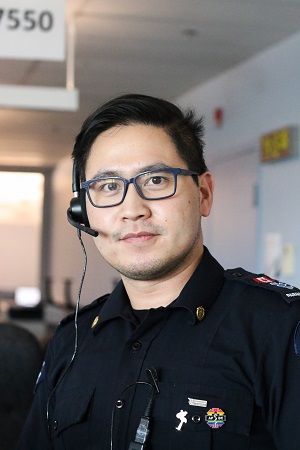 What is the best part about working in dispatch?
What is the best part about working in dispatch?
Everyday I go home and I know I've made a difference. It's not just about sending patients an ambulance but also making sure they have the right response at the right time.
What is something about your job that people in the general public might find surprising?
It's kind of like air traffic control and it's ever-evolving. There are a lot of things you need to watch out for, so you need to maintain an almost 100 per cent level of focus for 12 hours.
What are the qualities that make a good call taker or dispatcher?
The right amount of empathy - you need to connect with people to understand what they're feeling and what they're going through but also be able to convey the part that you're able to help them with. Using the right tone of voice and choice of words to connect with them is important.
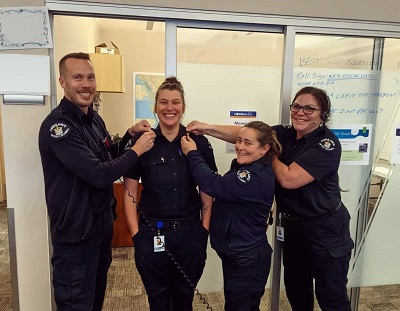
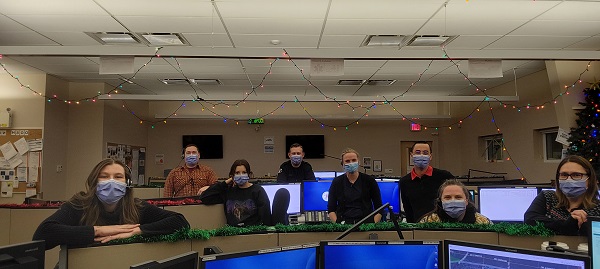
(Left to right: Paul Alberts, Erin Menday, Amy Curtis, Kazia Waugh and members of the Kamloops Dispatch Centre)
What is the best part about working in dispatch?
Being able to provide life-saving instructions while paramedics are on their way to a patient's house.
In so many situations, the first seconds or minutes are vital to a patient's chances of survival. To be able to be there for the patients and their families so they're not alone until the paramedics arrive is incredibly rewarding.
What is something about your job that people in the general public might find surprising?
Unless you're calling from a landline telephone, we can only narrow your location down to a certain radius, which differs depending on where you are. If you are calling from a cell phone, the most important part of the entire call will be the address or location you need help sent to.
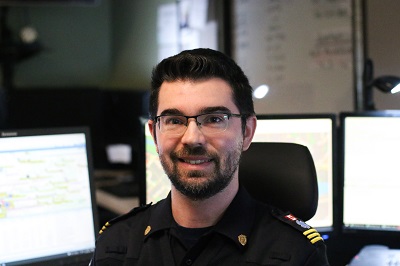 What does your work involve?
What does your work involve?
We coordinate the entire air ambulance service for the province of British Columbia. We arrange air ambulances to transport any patient who is sick and requires transport to another receiving centre that is a fair distance away from them.
What is most rewarding about your work?
The most rewarding part is to see a patient start from an originating point and be able to successfully move them to a receiving centre that is going to take them on a path that heals them of the disease or injury that they have.
What is something about your job that people in the general public might find interesting?
Our work breaks into two parts. The first part is the aviation side: we have to learn a lot about our aircraft – both helicopters and planes - and everything you have to coordinate, like weather, types of resources and certifications of the crews that are moving the patient. The second part is the care: the patients we move are usually complex cases, so we have to learn a fair bit about critical care paramedicine.
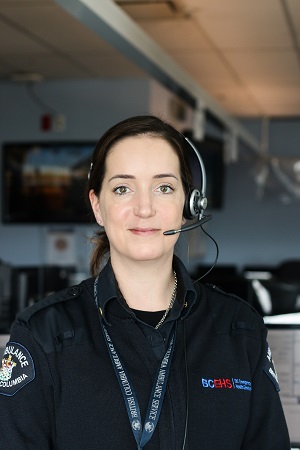 What inspired you to work in dispatch?
What inspired you to work in dispatch?
Initially, I was wanting to get a full-time spot in the ambulance, and this was the quickest way to do it. But once I got up here, I loved it and now I've been here for 10 years.
What do you enjoy most about your work?
I love the people I get to work with – that's the biggest thing. I also love the work that we do. The most rewarding part about my job is when we get those cardiac arrest calls and we're able to save the patient's life. It's great to hear that by the time paramedics get the patient to hospital, they were able to revive the patient and that they're talking and back with their family.
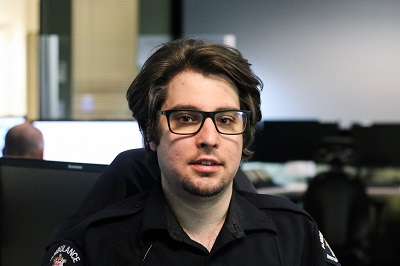 What inspired you to work in dispatch?
What inspired you to work in dispatch?
As a paramedic, I was always interested in the background information like how a call develops over time and what it's like to interact with the public on the phone. I started off on the 9-1-1 side and then decided to come over to the Patient Transport Coordination Centre to get a provincial point of view.
What is most rewarding about your work?
The challenge. It's been quite interesting to come to work everyday and not know what to expect. Dealing with the provincial side, it's interesting to see how a patient gets moved from one community to another for a higher level of care and the work that goes in, not only from the BC Ambulance side, but also from all the health authorities that are also dealing with the patient.
What do you enjoy most about your work?
I have worked with PTN as both a patient transfer coordinator and In-Charge for 17 years. I really enjoy working as a patient transfer coordinator because I like working in this exciting, always changing, fast-paced environment. It can be stressful trying to organize a patient’s journey in a health-care system that is stretched thin, but it is rewarding to know that everyone involved is skilled and knowledgeable, and that together as an organization, we are able to get patients to the care they need.
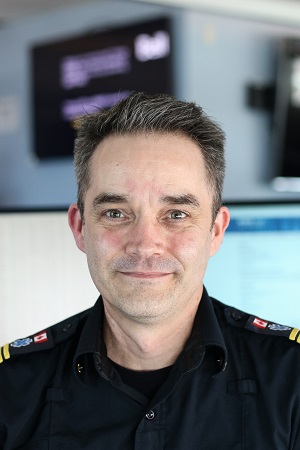 What inspired you to work in dispatch?
What inspired you to work in dispatch?
Helping people. I've always been a people person and it's something I've always wanted to get involved in but never did at an early age. This is my second career and my wife encouraged me to look into paramedicine. As I was going through the paramedic program, I was working as a police dispatcher, and then I decided to jump into ambulance dispatch to make it all under one umbrella. I still maintain a paramedic license, but dispatch is where I'm at now.
What kind of people pursue a career in dispatch?
There's a pretty wide variety of people – different ages, gender, religious backgrounds, ethnic backgrounds –but there's one common thread that ties all of us together: everyone who gets into this line of work do it because they have a desire to help people.
Please join us in recognizing our emergency medical call takers, dispatchers, patient transfer coordinators, and community paramedic coordinators by
sending a message of thanks if one of them has made a difference in your life or the life of someone you love.

